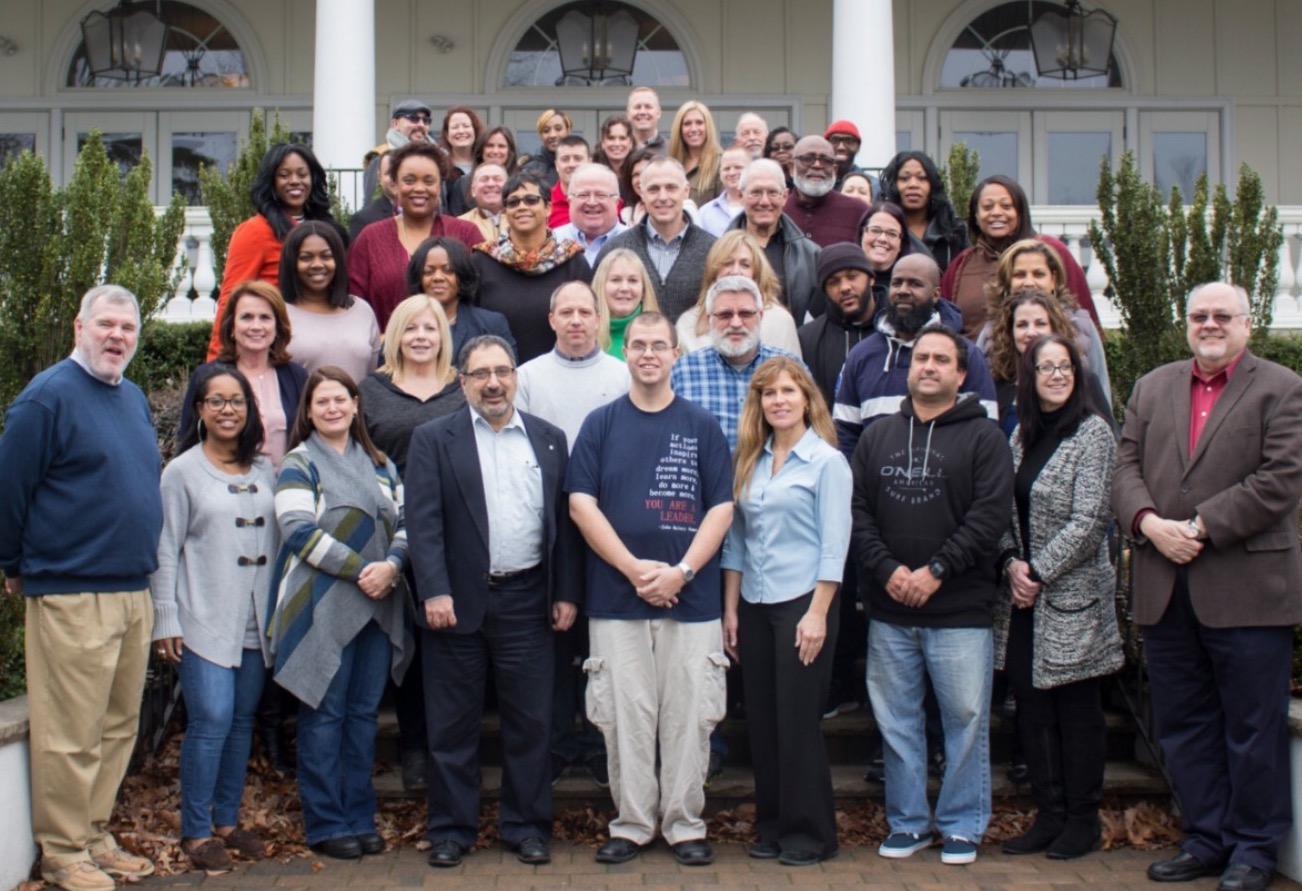Essential Habits and Mindsets
Integrated and Sustained
We take the view that development of the essential habits/mindsets is an integrated
and sustained process. While the essential habits/mindsets and core leadership understandings
are reviewed in separate documents, they are designed to reinforce each other by overlapping
and interconnecting and providing a solid framework for leadership development. Developing
the habits is a lifelong journey that commences, or is advanced, at the beginning
of the three-year program and extends well beyond the duration of the program. We
take the view that developing the habits is:
- a journey of continuous exploration to acquire, explore, and deepen understanding;
- a journey of continuous awareness in which leaders grasp the benefits of the habits in their own behavior and leadership actions as well as the behavior and leadership actions of others;
- a journey of cultivating more skillful capacity as participants connect and apply the habits within the practice of leadership; and
- a journey of refining the ability to critically self-reflect on one’s leadership behaviors
and actions through the seven essential habits/mindsets.

Different Leadership Developmental Stages
The three-year program is designed to connect the program competencies for the essential
habits/mindsets with classroom practice and the workplace. Throughout the program,
lead faculty, affiliated faculty, and guest speakers will provide activities, scenarios,
strategies, and opportunities for participants to engage with the essential habits/mindsets
in order to facilitate growth. As with the core leadership understandings, the program
is also designed to develop and support participants through different leadership
developmental stages. Since the participants in the program will enter the program
with varied experiences and mindsets, we recognize that participants will move through
the leadership development stages at different paces. We also recognize that participants
may not be able to develop all of the competencies associated with the essential habits/mindsets
equally. In order to focus the program participants, we have distinguished the competencies
for the essential habits and mindsets as primary or secondary. Ten of the competencies
are identified as primary, and 15 of the competences are identified as secondary.
Primary competencies are identified by the bold text. The competencies for the essential
habits/mindsets are based on current research in leadership development and reflect
the behaviors and mindset necessary for leaders to maximize opportunities for success
in the current, complex environment in which leadership takes place.
Evidence of Achievement
With the core leadership understandings, evidence of achievement at the competent
or skilled level is expected. With regard to the essential habits/mindsets, however,
these competency descriptions and expectations are not comparable as the habits are
never fully achieved or mastered. Instead, they are continually practiced, modified,
refined, and internalized as they become a ‘North Star’ or ‘internal compass’ to guide
a leader’s actions, decisions, and authenticity.
Because the growth journey for the essential habits/mindsets is elusive and extends well beyond the duration of this program, we have combined aspects of Costa’s Dimensions of Growth (Costa, Anderson, and Kallick. Dimensions of Growth: 16 Habits of Mind. 2008, 2014) and Bloom’s Affective Domain of Learning (Bloom and Krathwohl. 2002) to guide and measure growth in leadership practice. Our corresponding five stages of growth are: Stage 1 (Receiving and Acquiring), Stage 2 (Responding and Connecting), Stage 3 (Valuing and Applying), Stage 4 (Organizing and Understanding), and Stage 5 (Characterizing and Self-directing). A short description of each Stage follows.
- Stage 1 (Receiving and Acquiring): Receiving refers to the participant’s exposure to the meaning associated with a habit, his/her willingness to explore the meaning through activities, scenarios, strategies, and opportunities, and his/her ability to acquire a rudimentary degree of meaning from the interactions. As the participant develops a basic knowledge of the meaning, he/she is able to draw upon a greater range of examples and begin to increase the depth of understanding of the meaning.
- Stage 2 (Responding and Connecting): Responding emphasizes the participant’s active involvement with the habit, the willingness and capacity to respond to and offer feedback about the habit, and the cultivation of interest from participating in the activities, scenarios, strategies, and opportunities. In Stage 2, the participant begins to observe connections between the habits and problems, decisions, and situations as well as utilize the habits more effectively and strategically. Participants also begin to develop a proficiency to select and apply the most appropriate strategy at the appropriate time.
- Stage 3 (Valuing and Applying): Valuing is concerned with the worth the participant attaches to a habit. Worth can range from simple acceptance of the habit to a more advanced level of commitment to the habit, where the competencies reflective of the habit are expressed in the participant’s actions and behaviors. In Stage 3, the participant recognizes that opportunities to engage in the habit have presented themselves. The participant begins to refine his/her ability to apply a habit in more complex and sophisticated ways.
- Stage 4 (Organizing and Understanding): In Stage 4, the participant organizes the values attached to a habit, resolves conflicts that exist between them, and begins development of a deep-rooted value system specific to the habit. The participant develops a deeper understanding about when and why it is appropriate to use a particular habit in a specific situation. In doing so, he/she deepens the values attached to the habit and makes a stronger commitment to using it. In Stage 4, the participant begins to view the habit as a pattern of behavior integrated with their leadership beliefs, values, and styles. He/she also grasps the benefit of the habits on the behavior and leadership actions of others.
- Stage 5 (Characterizing and Self-directing): Characterizing is the internalizing of the values associated with a habit so they
consistently influence and are exhibited in the participant’s behavior. In Stage 5,
the participant views the habit as a pattern of behavior integrated with his/her leadership
beliefs, values, and styles. The leader builds a commitment to continuous improvement
in the use of the habit and becomes increasingly self-directed. Self-direction takes
the form of self-managing, self-monitoring, self-reflecting, and self-improving as
the leader uses the habit, evaluates the use of the habit, and sets new and higher
standards for its use.

Integrated Whole
While we realize that each participant’s growth on the essential habits/mindsets will
be different, we expect that all program participants will experience and demonstrate
growth on the 10 primary competencies to a minimum of Stage 3, based upon an essential
habits/mindset rubric, self-assessments, and workplace assessments completed by co-workers
up, down, and at the middle of the organization implemented formatively at the end
of the first and second years of the program and summatively at the end of the third
year of the program.
Course syllabi will identify the specific competencies for the essential habits/mindsets that are emphasized in each course as well as in each learning outcome in that course. There is no one-size-fits-all approach with regard to demonstrating growth. Participants are expected to provide evidence to support growth as they move through the program. The evidence of competency growth for each essential habit/mindset will build exponentially as the student moves through, and beyond, the program.
The competencies for the essential habits/mindsets are not viewed as separate and distinct entities, but rather as an integrated whole, all important for effective leadership development and application.
PDF Version: Essential Habits/Mindsets and Competencies


